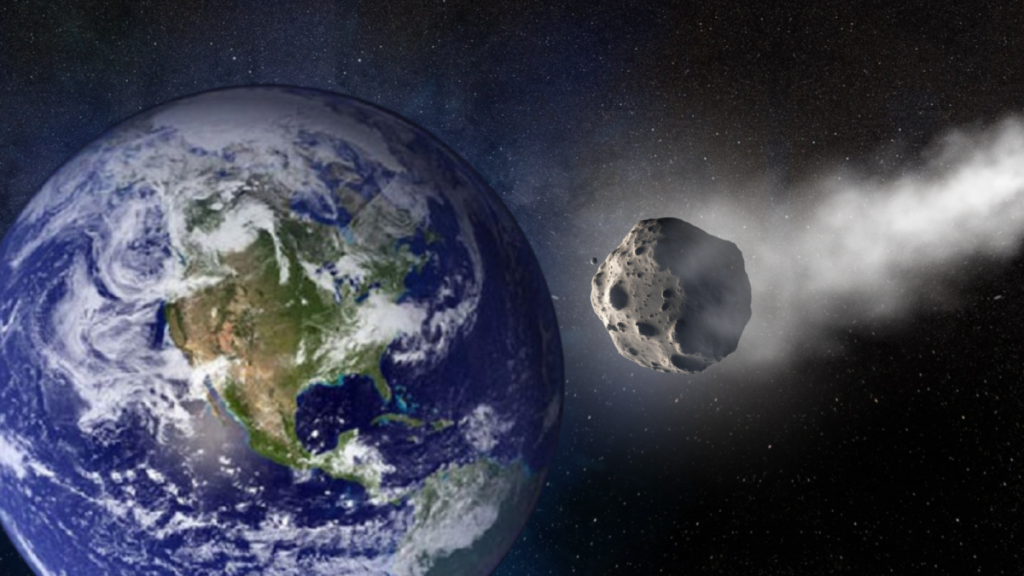China is planning its first mission to hit an asteroid in the name of planetary defense. The mission will serve a dual purpose: one craft will hit the asteroid while its partner observes the space rock to learn more about the solar system and its formation.
The China National Space Administration (CNSA) mission may have already selected its target: the object near earth (NEO) 2015 XF261, a nearly 30-meter wide asteroid.
According to the small database managed by NASA’s Jet Propulsion Laboratory (JPL), 2015 XF261 last came relatively close Soil just this week, on Tuesday (July 9), when it passed within 31 million miles (50 million kilometers) of our planet. The space rock was traveling at about 26,000 mph (42,000 km/h), about 30 times faster than the speed of sound.
The non-profit organization Planetary Society reported that this is the latest development in asteroid impact mission planning for China, a country that has recently become increasingly interested in planetary defense.
Related: 2 asteroids just whizzed past Earth, and NASA captured footage of the action
The Planetary Society referred to a recent article in the Journal of Deep Space Exploration in which the proposed 2015 XF261 target mission was discussed.
“China’s first in-orbit verification mission for asteroid defense will demonstrate the potential risk of near-Earth asteroids impacting Earth,” the study said.
“The scientific objectives of the space verification of asteroid defense and the specific scientific exploration mission will be designed and proposed,” it adds. “A scientific analysis of payload demand will be conducted, and payload configuration plans and exploration mission requirements will be proposed to provide a basis for decision-making for the future implementation of asteroid defense missions.”
In light of the impact of DART
The planned mission follows in the footsteps of a groundbreaking NASA planetary defense mission, the Double Asteroid Detour Test (DART)which impacted the smaller body in September 2022 Didymos binary asteroid system.
The impact of the 570-kilogram DART spacecraft on the moon Dimorphos, which orbits a larger 780-meter asteroid called Didymosat a speed of 14,000 mph (22,500 km/h) was considered a success. The impact changed the orbit of the two asteroids and showed that, given sufficient lead time, a kinetic impactor can smaller asteroid from an impending collision with Earth.
In October 2024 the European Space Agency (ESA) will launch the Hera spacecraft to the Didymos system to further assess the impact of the DART mission. Hera is expected to rendezvous with Dimorphos and Didymos in 2026.
The Chinese 2015 twin-spacecraft mission XF261 will combine the work of DART and Hera. The mission will impact the NEO and monitor the target for six months to a year after impact.
Asteroids like 2015 XF261 are thought to have formed from material left over from the formation of the planets about 4.6 billion years ago. As such, they offer an opportunity to study the “unspoiled” material that formed the building blocks of the worlds of the solar system, including Soil.
The CNSA mission is expected to launch before 2030 and the final choice of the NEO target will depend on the launch schedule. In April 2024, SINA Technology reported that Wu Weiren, director of the China Deep Space Exploration Laboratory (DSEL), set a more definitive date for the mission’s launch, stating that it should take place sometime around 2027.
2015 XF261 will pass Earth in March and May 2027, but the asteroid will still be 20 million miles (32 million km) from our planet, and the CNSA will need time to reach it. DART hit Dimorphos when the system was just 7 million miles from Earth, and that journey took 10 months.
The CNSA could get another chance to hit 2015 XF261 in April 2028, when the asteroid will be about 13 million miles (21 million km) from Earth. But the best chance for such a mission appears to come in April 2029, when the asteroid will come within 4.2 million miles (6.8 million km) of Earth. Another good opportunity will come in April 2030, when 2015 XF261 will approach within about 4.4 million miles (7.1 million km) of Earth.
RELATED STORIES:
— When a dangerous asteroid threatens Earth, humanity will have to work together, NASA says
— Deflecting Deadly Asteroids From Earth: How We Can Do It
— This is what would happen if scientists found an asteroid headed for Earth
This is not the first asteroid impact mission proposed by CNSA. In 2023, the Chinese space agency appeared to have planetary defense test to launch in 2025.
This mission would have set its sights on another asteroid, known as 2019 VL5. It is not known why the CNSA appears to have switched from this NEO, which is also about 100 feet (30 m) wide, to 2015 XF261.

